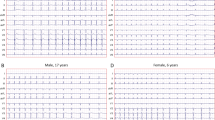Abstract
Sanogenetic monitoring of schoolchildren’s health has demonstrated that, among high school students, the proportion of adolescents with elevated blood pressure (hypertension + hypernormotension) has risen from 15–20% in 8th-year students to 30–50% in 9th- to 11th-year students, while the proportion of adolescents with hypertension was 3.7% in all age groups. The level of blood pressure (BP) was compared with parameters of the autonomic control of the cardiovascular system. A high normal BP in adolescents 13–14 and 17–18 years of age was correlated with the higher proportion of low frequencies in the spectrum of heart rate variability (HRV) and with the lower sensitivity of the arterial baroreflex. At the age of 15–16 years, a high normal BP was accompanied by a reduced heart rate and a higher sensitivity of the arterial baroreflex; BP correlated also with a decrease in power of the high-frequency region of the HRV spectrum. Unlike normotensive age-matched subjects, hypernormotensive adolescents 15–16 years of age have a lower finger blood pressure and reduced relative power of the low-frequency range in the HRV spectrum during the functional test (an increase in the dead space). This may be a result of a functional inadaptability of sympathetic autonomic regulation.
Similar content being viewed by others
References
Aleksandrov, A.A., Elevated Blood pressure in Children and Adolescents (Juvenile Arterial Hypertention), Russk. Med. Zh., 1997, vol. 5, no. 9, p. 559.
Shkol’nikova, M.A., Osokina, G.G., and Abdulatipova, I.V., Current Tendencies of Cardiovascular Diseases and Death Rate in Children of Russia Federation; Structure of Heart Pathology in Children, Kardiologiya, 2003, no. 8, p. 4.
2007 Guidelines for the Management of Essential hypertension, J. Hypertention, 2007, vol. 25, p. 1105.
Rumyantsev, A.G. and Pankov, D.D., Aktual’nye problemy podrostkovoi meditsiny (Current Problems of Adolescent Medicine), Moscow: Stolichnyi Biznes, 2002.
King, C.A., Meadows, B.B., Engelke, M.K., and Swanson, M., Prevalence of Elevated Body Mass Index and Blood Pressure in a Rural School-Aged Population: Implications for School Nurses, J. Sch. Health, 2006, vol. 76, no. 4, p. 145.
McNiece, K.L., Poffenbarger, T.S., Turner, J.L., Franco, K.D., Sorof, J.M., and Portman, R.J., Prevalence of Hypertension and Pre-Hypertension among Adolescents, J. Pediatr., 2007, vol. 150, no. 6, p. 640
Pankova, N.B., Chamokova, A.Ya., Mamgetov, K.Yu., Pustovet, Z.T., Cherepov, A.B., and Karganov, M.Yu., Comparative Analysis for Functioning the Cardiovascular and Psychomotor Systems in School Children as Dependent on Inhabited Area and Teaching Load, Ekol. Chel., 2006, suppl. 4/2, p. 212.
Rozanov, V.B., Aleksandrov, A.A., Perova, N.V., Shugaeva, E.N., and Zvolinskaya, E.Yu., Stability and Prognostic Implication of Abnormal Lipid Blood Spectrum in Adolescents: A 22-Year Research, Kardiovask. Terap. Profil., 2007, vol. 6, no. 5, p. 70.
Sorov, J.M., Turner, J., Martin, D.S., Garsia, K., Garami, Z., Alexandrov, A.V., Wan, F., and Portman, R.J., Cardiovascular Risk Factors and Squeals in Hypertensive Children Identified by Referral versus School-Based Screening, Hypertension, 2004, vol. 43, no. 5, p. 214.
Nefedova, Zh.V. and Soboleva, M.K., Manifestations of the Metabolic Syndrome in Children and Adolescents with Essential Hypertension, Byull. VSNTs Sib. Otd. Ross. Akad. Med. Nauk, 2007, vol. 55, no. 3, p. 110.
Flynn, J.T. and Alderman, M.N., Characteristic of Children with Primary Hypertension Seen at a Referral Center, Pediatr. Nefrol., 2005, vol. 20, no. 7, p. 961.
Kolesnikova, L.I., Dolgikh, V.V., Dzyatkovskaya, E.N., and Polyakov, V.M., Psychosomatic Status of the Preschool and School Children, Byull. Sib. Otd. Ross. Akad. Med. Nauk, 2003, vol. 108, no. 2, p. 17.
Nefedova, Zh.V. and Slobodskaya, E.R., Personality Features and Psychical Health in Children and Adolescents with Essential hypertension of Different Genesis, Byull. Sib. Otd. Ross. Akad. Med. Nauk, 2004, vol. 114, no. 4, p. 29.
Deter, H.-Ch., Toward a new Strategy to Implement Psychosomatic Knowledge in Medical Practice, BioPsyhoSocial Med., 2008, vol. 2, no. 1, p. 2.
Davrath, L.R., Goren, Y., Pinhas, I., Toledo, E., and Akselrod, S., Early Autonomic Malfunction in Hypertensive Individuals with a Genetic Predisposition to Essential Hypertension, Am. J. Physiol. Heart Circ. Physiol., 2003, vol. 285, p. H1697.
Pivovarov, V.V., Spiroarteriocardiorhythmograph, Med. Tekh., 2006, no. 1, p. 38.
Baevskii, R.M. and Ivanov, G.G., Heart Rate Variability: Theoretical Aspects and Clinical Implications, Ul’trazvuk. Funkts. Diagn., 2001, no. 3, p. 108.
Parati, G., Arterial Baroreflex Control of Heart Rate: Determining Factors and Methods to Assess Its Spontaneous Modulation, J. Physiol., 2005, vol. 565, no. 3, p. 706.
Trukhanov, A.I., Pankova, N.B., Khlebnikova, N.N., and Karganov, M.Yu., The Use of Spiroarteriocardiorhythmography as a Functional Test for Estimating the State of Cardiorespiratory System in Adults and Children, Fiziol. Chel., 2007, vol. 33, no. 5, p. 82 [Human Physiol. (Engl. Transl.), vol. 33, no. 5, pp. 585].
Tambovtseva, V.I., Functional Disorders of Cardiovascular System in Children and Adolescents: Modern Approach to the Problem, Ros. Pediatr. Zh., 2007, no. 2, p. 35.
Lenard, Z., Studinger, P., Mersich, B., Kocsis, L., and Kollai, M., Maturation of Cardiovascular Autonomic Function from Childhood to Young Adult Age, Circulation, 2004, vol. 110, no. 6, p. 2307.
Lucini, D., Mela, D.S., Malliani, A., and Pagani, M., Impairment in Cardiac Autonomic Regulation Preceding Essential hypertension in Humans: Insights from Spectral Analysis of Beat-to-Beat Cardiovascular Variability, Circulation, 2004, vol. 110, no. 6, p. 2307.
Lucini D., Di Fede G., Parati G., Pagani M., Impact of Chronic Physiological Stress on Autonomic Cardiovascular Regulation in Otherwise Health Subjects, Hypertension, 2005, vol. 46, p. 1201.
Author information
Authors and Affiliations
Additional information
Original Russian Text © N.B. Pankova, I.B. Alchinova, E.V. Afanaseva, M.Yu. Karganov, 2010, published in Fiziologiya Cheloveka, 2010, Vol. 36, No. 3, pp. 82–89.
Rights and permissions
About this article
Cite this article
Pankova, N.B., Alchinova, I.B., Afanaseva, E.V. et al. Functional characteristics of the cardiovascular system in adolescents with high normal blood pressure. Hum Physiol 36, 319–324 (2010). https://doi.org/10.1134/S0362119710030102
Received:
Published:
Issue Date:
DOI: https://doi.org/10.1134/S0362119710030102



